REEF Madness
This trip was all about the fish - and not just the cool sharks and barracudas or gigantic groupers. REEF (Reef Environmental Education Foundation) took over NAI’A with a group of fish surveyors, new and experienced, to tour the best of Fiji with us. They couldn’t get enough of Amy’s fish talks, even when she talked about fusilier damsels that look like anthias. Or about the differences between the yellow-barred and the yellowbar parrotfish. Yes, really. The fish nerdiness was well above anything we’ve ever seen, and the inverts felt very left out. Nudibranchs went unappreciated and mantis shrimps went unrecognized (what is this??). But a great time was had by all!
Our REEFers boarded efficiently and set out to their checkout dive at Samu reef. We advised them to focus on just getting their weights right, but these surveyors are unstoppable and could not help but do what they do best: identify and count every fish they see. Not only does this provide valuable data about our fish population and diversity, but it helped improve our level of fish nerdiness.
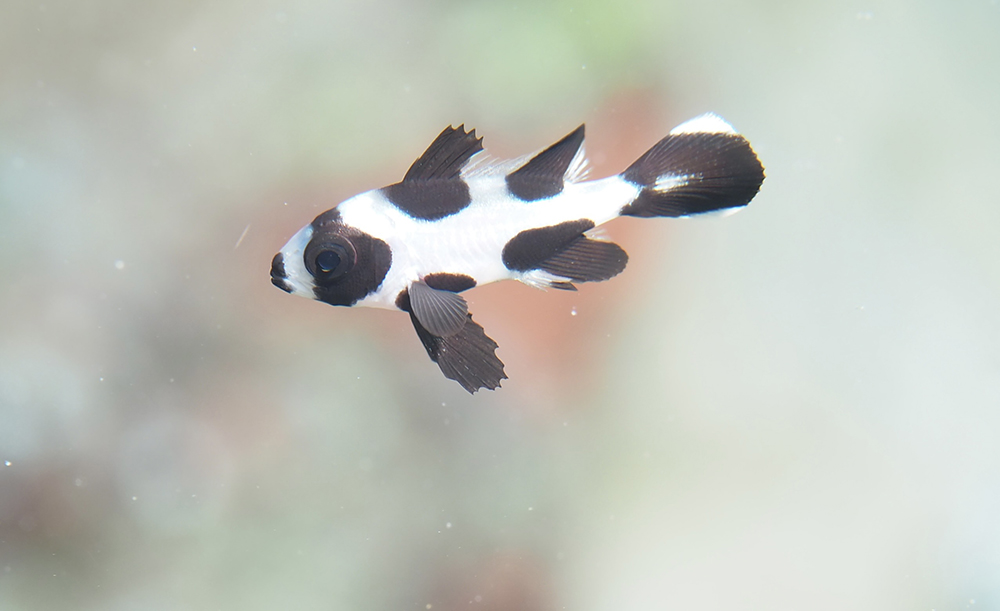
Photo by Hal: Juvenile black snapper
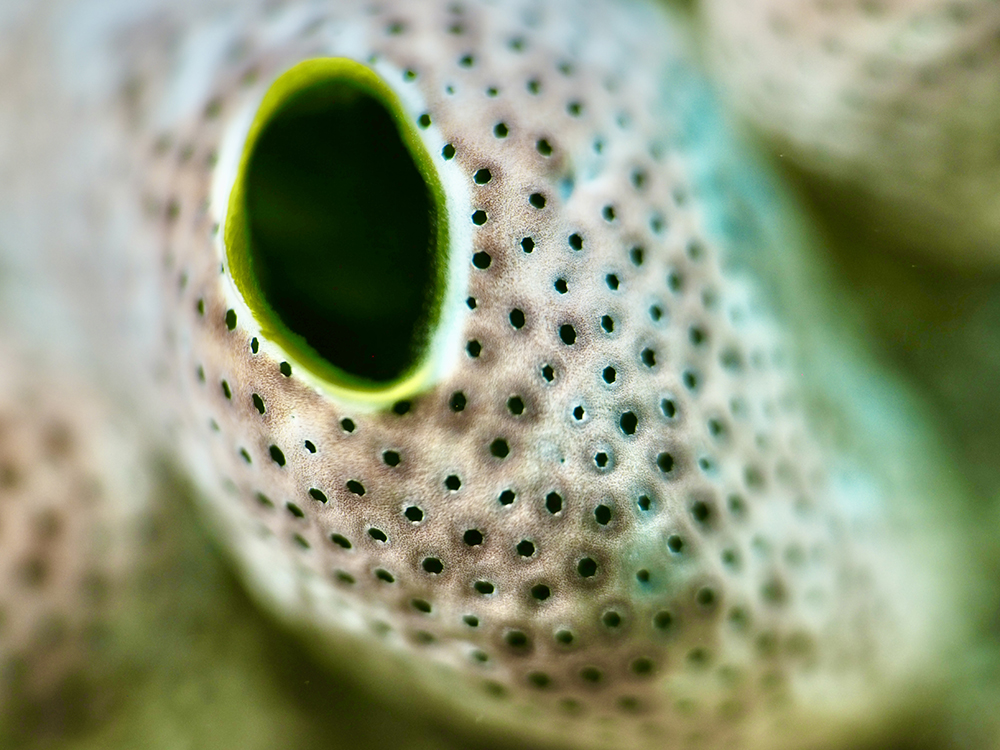
Photo by Hal: Not a fish. Is it a tunicate? Is it a golden mantis shrimp? Who knows??
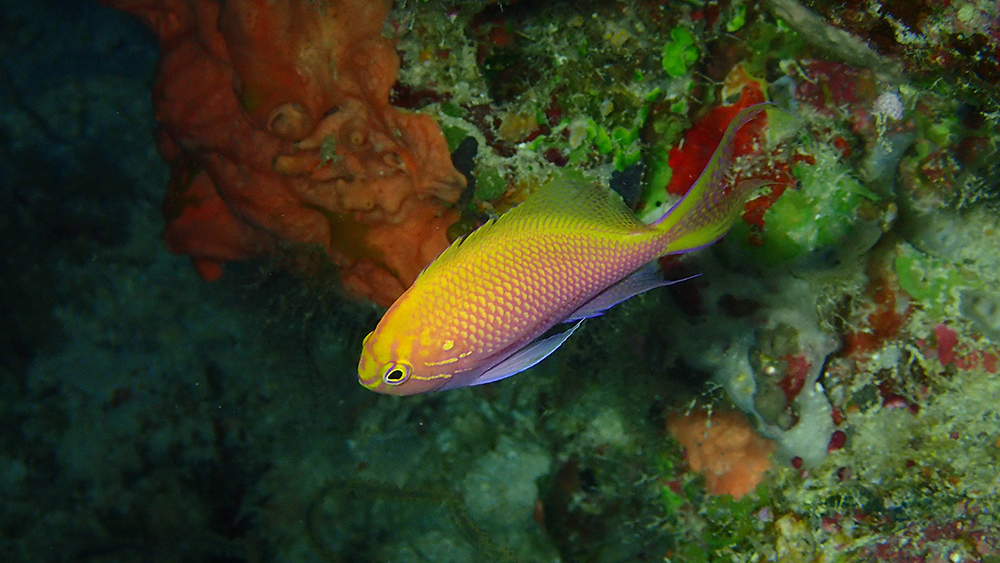
Photo by Amy Lee: Hawk anthias
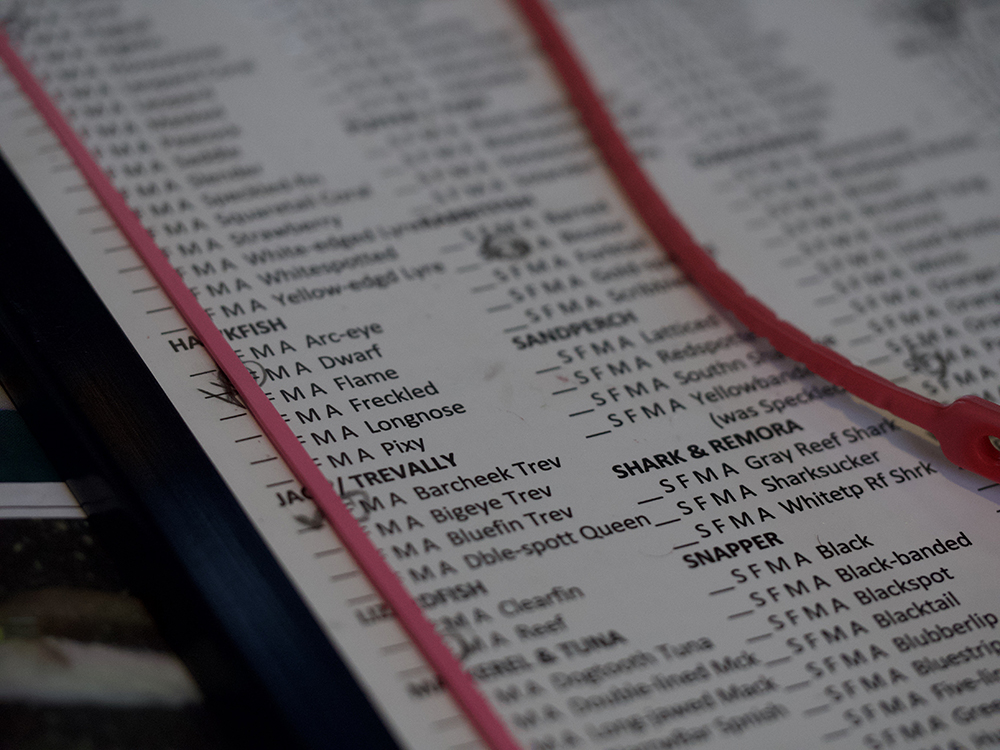
Photo by Hal: Survey sheet
We moved to Vuya overnight and spent the day overwhelmed by the continuous flow of fusiliers at UndeNAI’Able and a special appearance by oceanic triggerfish. The current at Cat’s and Humann limited our mobility around the sites but concentrated the fish and opened up the soft corals. Sightings included leopard and redspotted blennies, tiny nudibranchs (or specks, according to Matt) and a few white tip sharks. We were briefly visited by spinner dolphins and exchanged nerdy fish jokes that included “sole mates”, floundering and not being “shellfish”. This was definitely our kind of guests!
Our next stop was at Namena Marine Reserve for two days of incredible diving. We saw multiple huge Humphead Wrasses (up to four together), longnose filefish, a ribbon eel, square spotted anthias, a golden mantis shrimp, flatworms, crinoid squat lobsters and clingfish, dragonets, yellownose shrimpgobies and an orangutan crab. Our final dive was at Grand Central with a strong current we hadn’t yet seen this year… which resulted in our most action-filled dive of the year so far. We descended on grey reef sharks feeding on queenfish, bigeye barracudas, massive tunas and mackerels, thousands of redtooth triggerfish (and Sally saw a shark casually eat one of them), schooling trevallies and Bel’s secret stash of abundant zebra and tutu (twotone) dartfish. At the end of that dive, Cammie came up with a new way to measure current saying that was a two-dessert dive. The dessert-current system was borne.
Our first night there featured our Kava Party, always a highlight. Bill was the best animal impersonator with a great donkey, but Joni, Tracey and Sue turned the dive deck into a dance floor and Hal stayed up the latest with the guys. He even played with them.
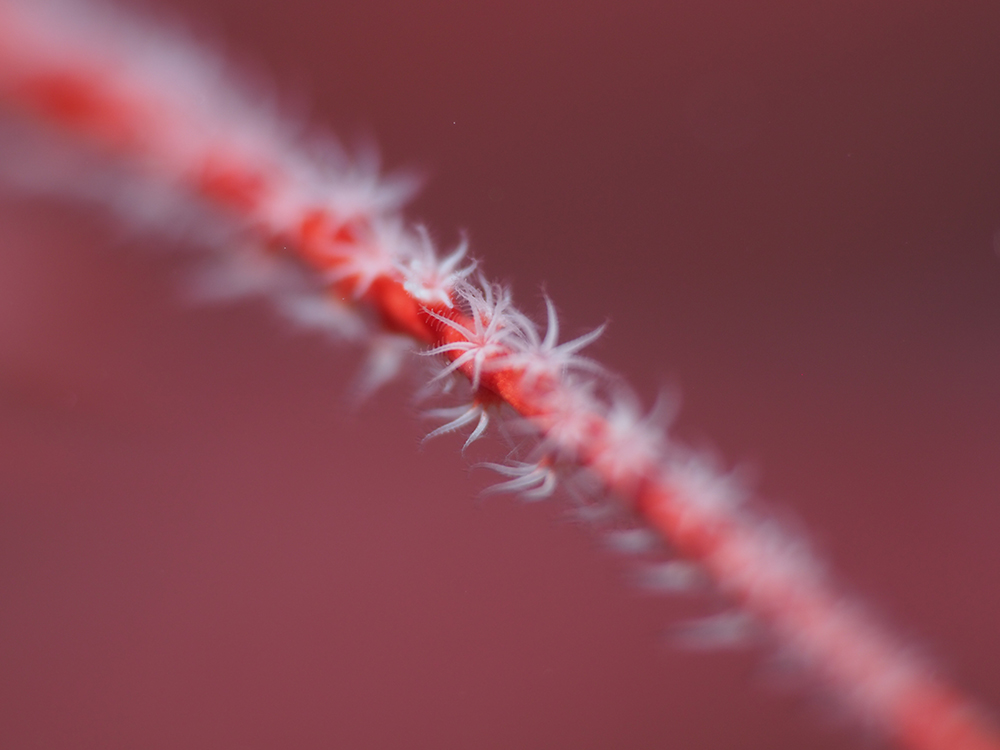
Photo by Hal: Not a fish
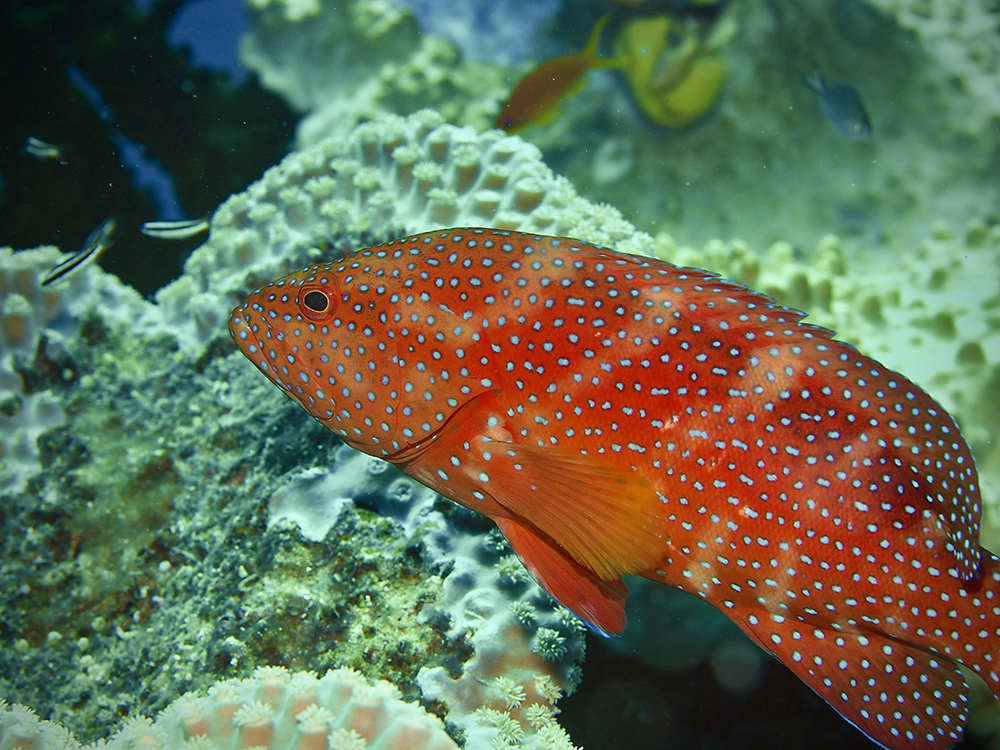
Photo by Hal: Coral grouper
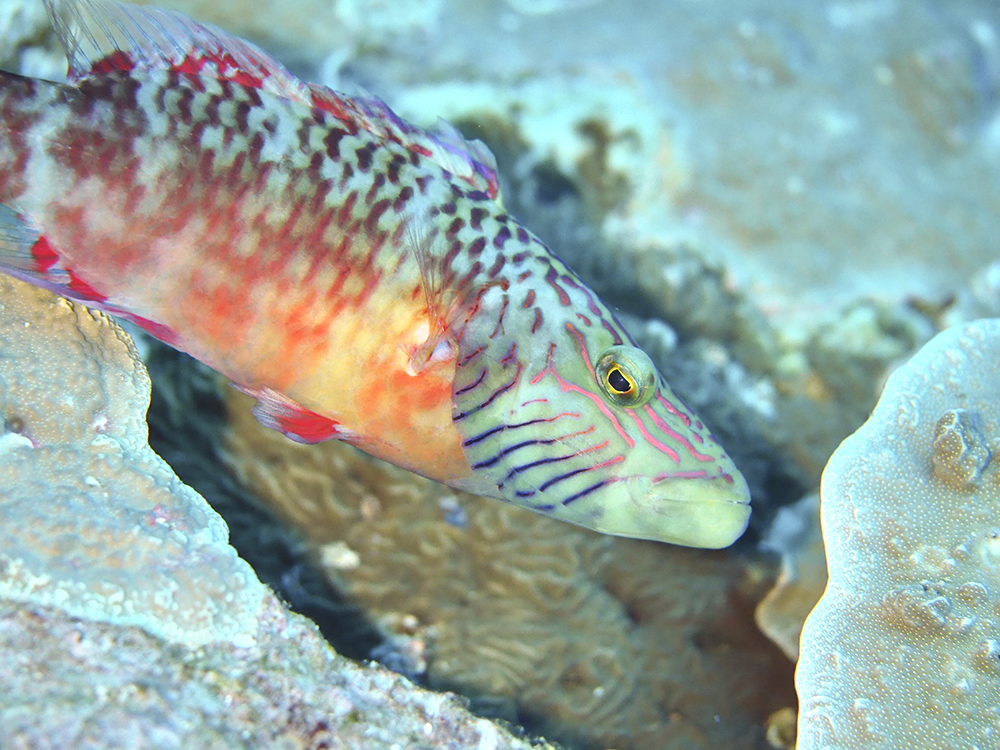
Photo by Hal: Cheek-lined wrasse
We moved to Makogai and decided to explore Vatu Vula, a site NAI’A hadn’t visited in a while… and what a treat that was! Our first dive there was filled with grey reef and white tip sharks, pickhandle, blackfin and bigeye barracudas as well as rivers of humpback snappers flowing by. But those were all just cute encounters when compared to the enormous pacific giant grouper that showed up… that big boy made the sharks look small… and then an even bigger grouper showed up, and left us all mumbling curse words into our regulators. It was so good, we did it twice. We also planned for a dusk dive, which had more current than we’ve ever seen in Makogai, but in which Bel saw her first two soft coral crabs in Fiji! Also on that dive, crawling crinoids crawling all over the place, a juvenile Papuan scorpionfish and a grey coral croucher. Octopusses, redfin anthias and turtles peppered the other bommie dives.
We did a long crossing to Gau, and we were excited to see the island for the first time this year. We had two great sea krait encounters, rockmover wrasses, a few midget chromis (apparently very different from pygmy damsels, which don’t exist), a passing manta, piano fangblennies, large-eye striped breams, juvenile black snappers (and now we can tell them from the juvenile midnight snappers), magenta dottybacks, octopus and many, many sharks. Baby and beefy grey reefs as well as white tips. Our village visit, the first of 2023, was as heart-warming as ever and a highlight for the trip. The village has many new puppies to keep Bel distracted and a curious and friendly lady pig.
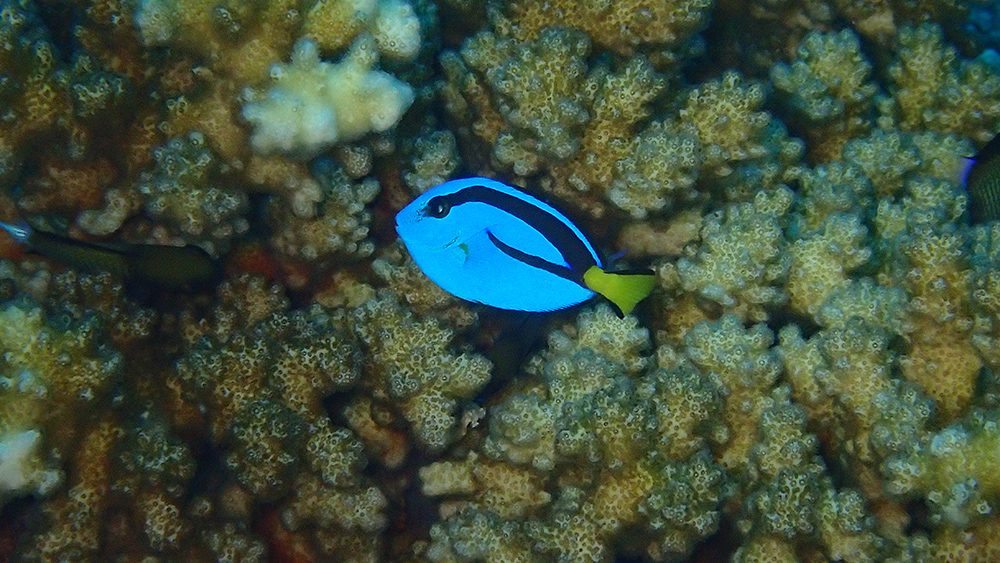
Photo by Amy: Palette surgeonfish
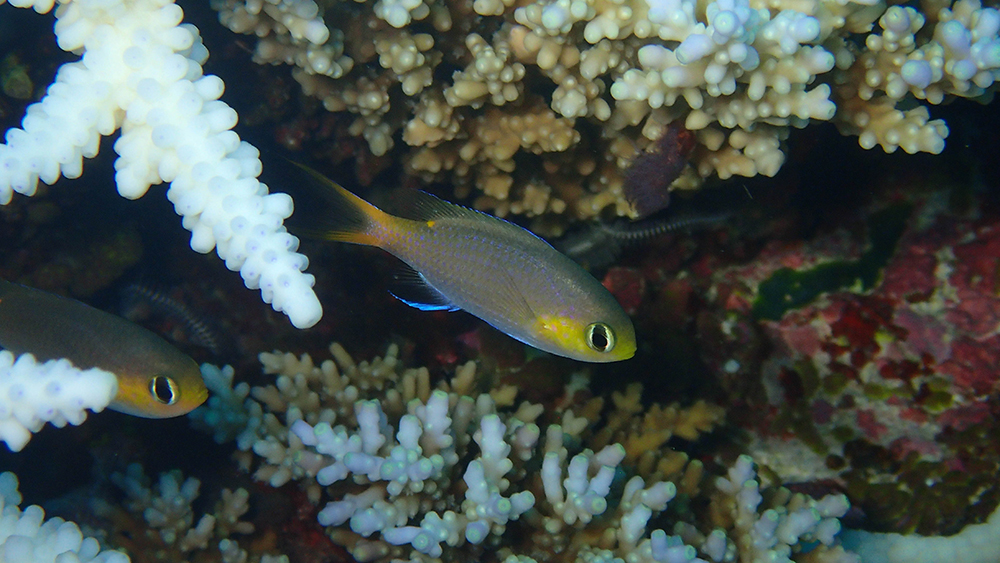
Photo by Amy: Midget chromis. Not to be confused with the imaginary pygmy damsel.
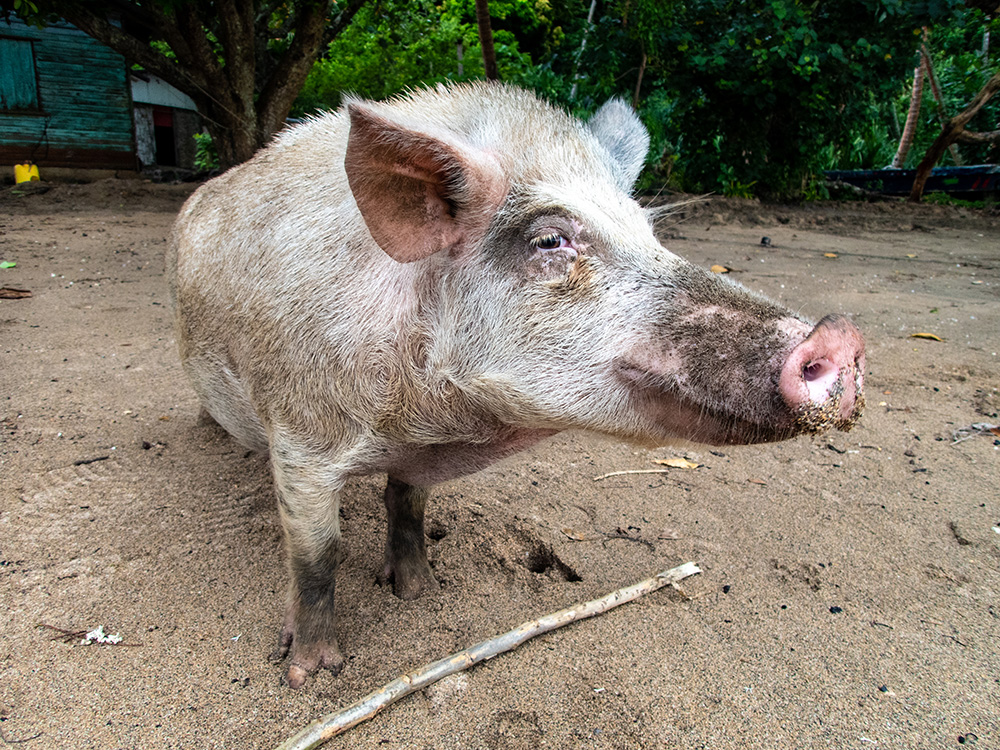
Photo by Bel: A very friendly lady pig
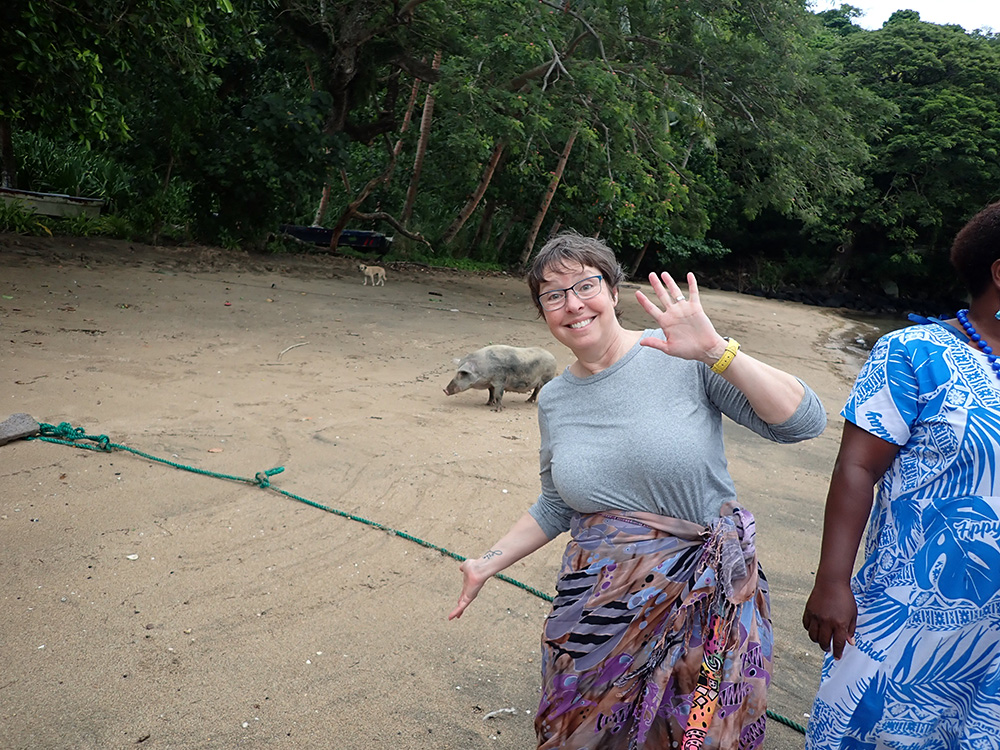
Photo by Michaela: Joni and the very friendly lady pig
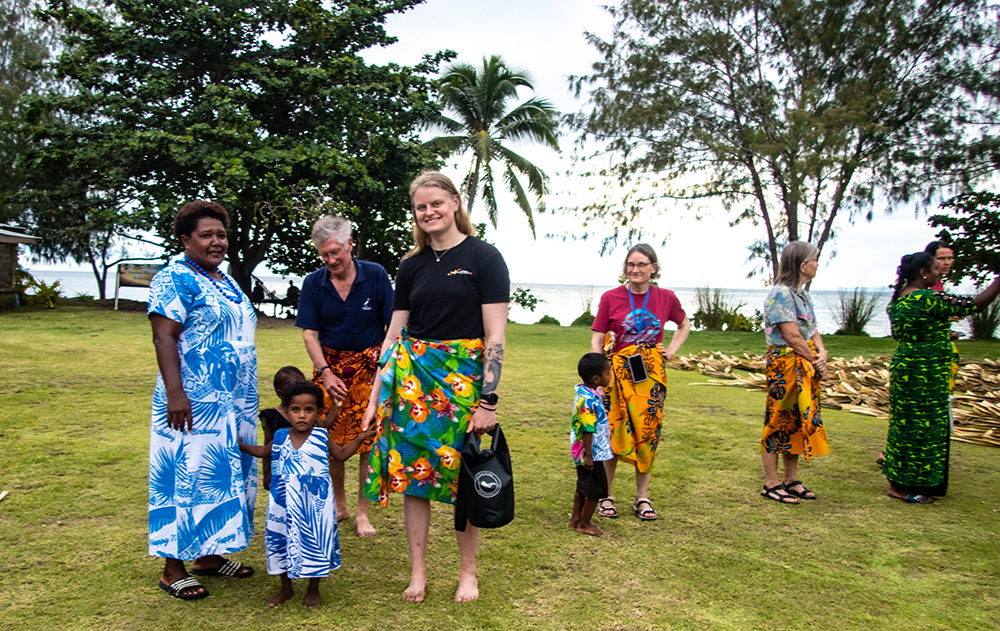
Photo by Bel: The kids each got a surveyor to call their own
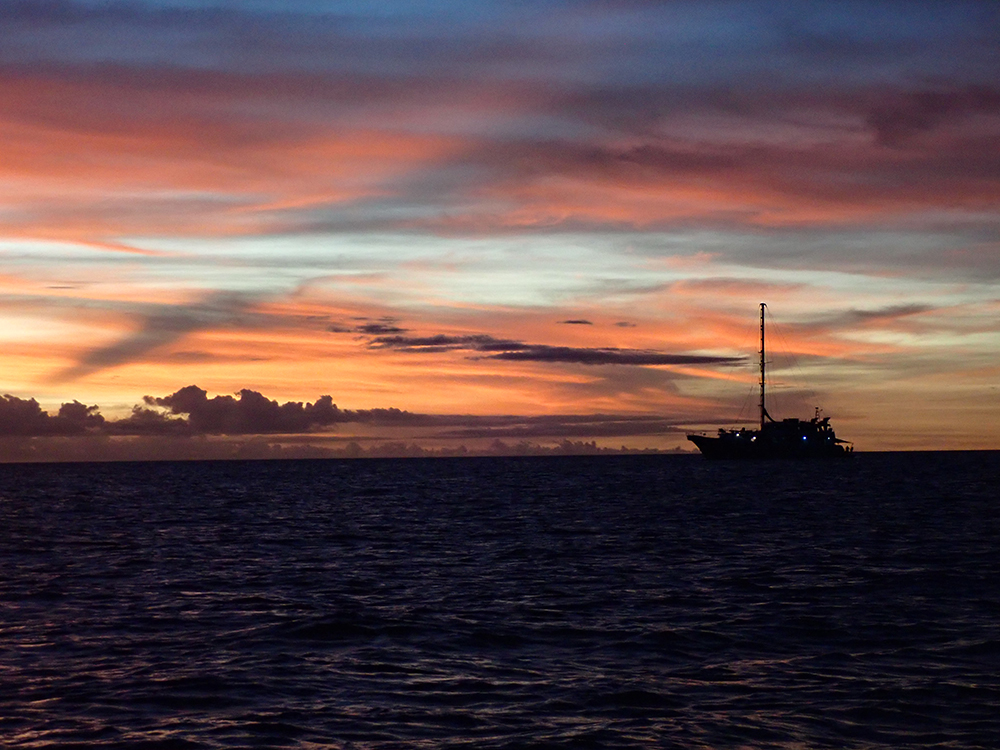
Photo by Michaela: Post village visit sunset
After hopping overnight to Wakaya, we woke up to an incredible sunrise. The currents were mild and manageable throughout the day and we had great visibility. We saw decorated dartfish, wormfish, yellownose shrimpgobies, bluefin damsels, orange-barred garden eels, bluehead tilefish, purple queen anthias, huge map puffers, a couple of adult palette surgeonfish, a grey reef shark doing the hula, confusing fusilier damsels and all the magenta slender anthias. The sunset over the mirror like water was another spectacle and the perfect way to say goodbye to Wakaya and head over to the sea mounts.
We were greeted by bottlenosed dolphins and enjoyed three stunning dives on E6 and Mount Mutiny. We saw pinktail triggerfish, boxfish and turtles. Clouds of fusiliers, chromis and damsels were everywhere. On the last dive, with stronger currents than we normally see in this area, we saw a lot of black snappers, bigeye trevallies, a few giant trevallies and grey reef sharks as well as white tips. After dinner, Matt showed Bel a picture of the really chunky shark he saw at Anthia’s Avenue two days before… and it turns out it was a huge bullshark!
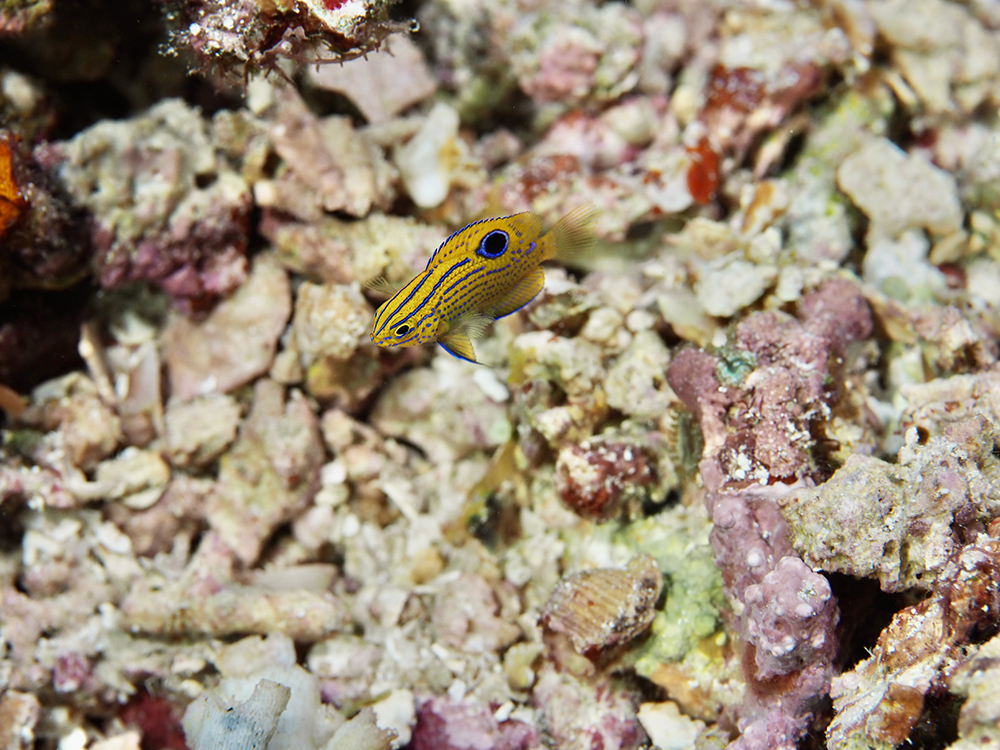
Photo by Hal: Juvenile princess damselfish
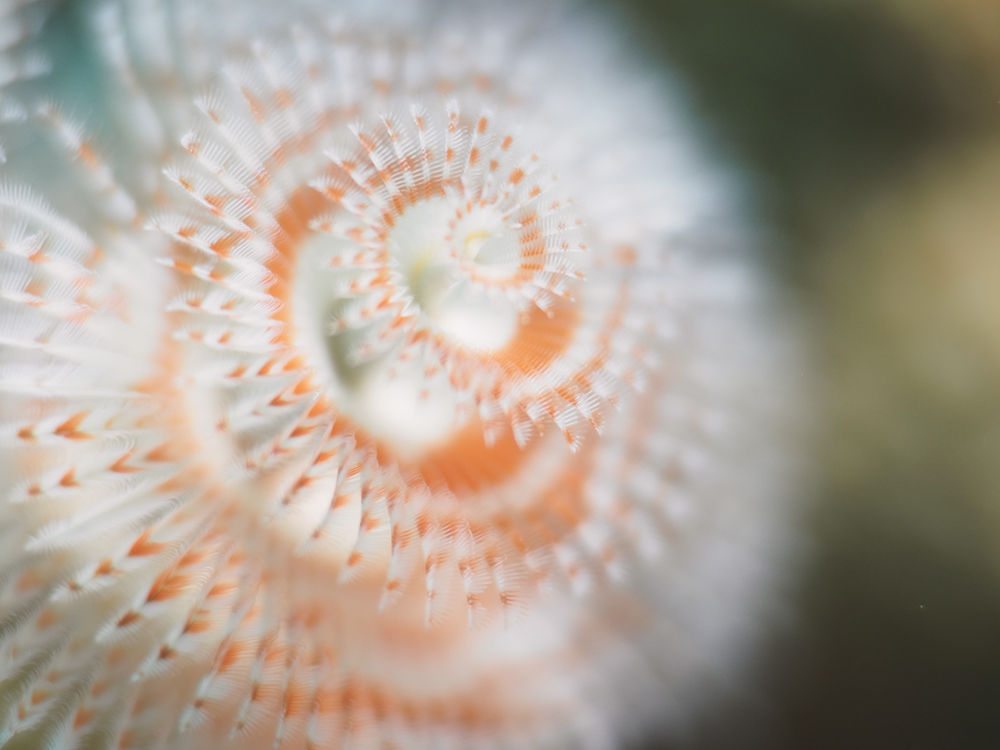
Photo by Hal: Not a fish
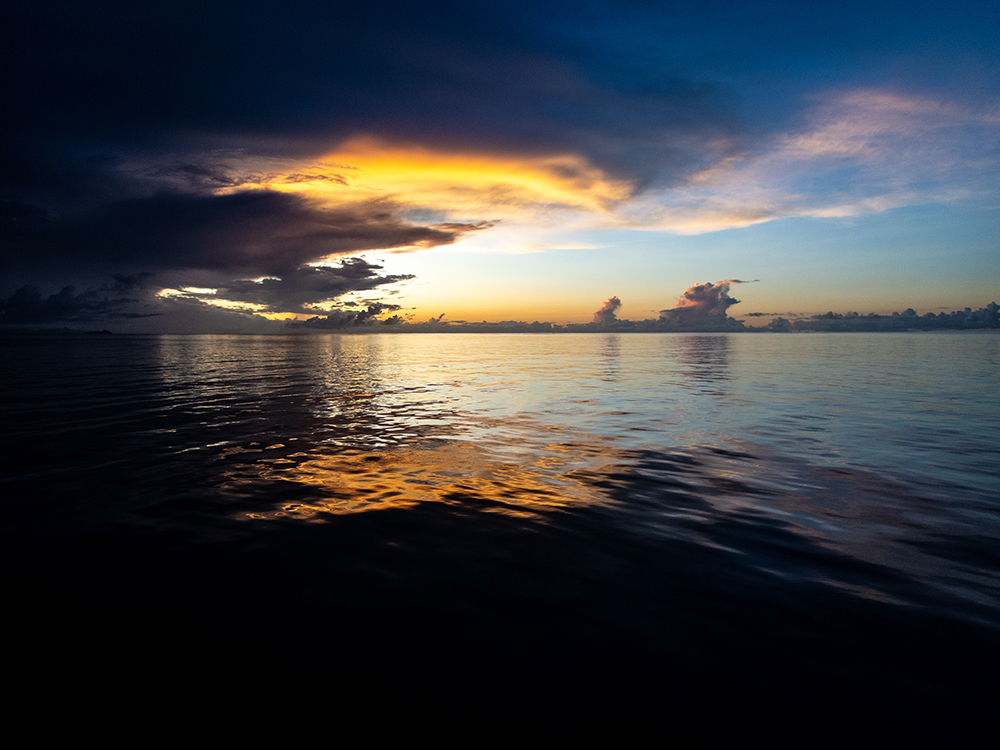
Photo by Bel: Flat calm water for our day at Wakaya
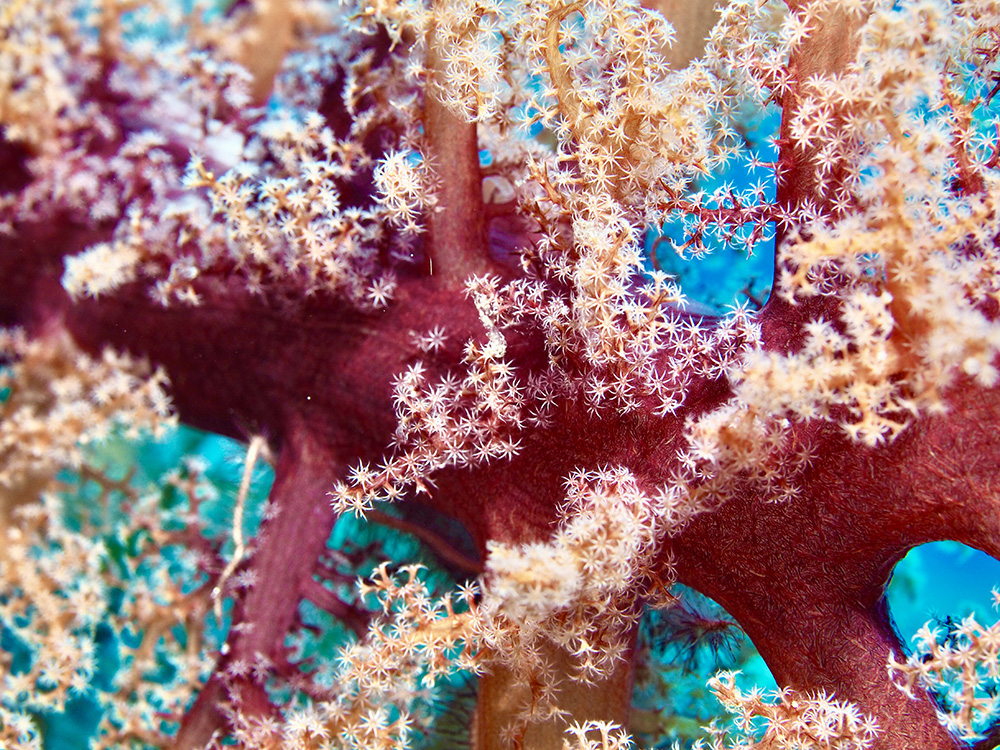
Photo by Hal: Not a fish
We finished the trip with two days at Vatu-i-ra. After reviewing the many hilarious ways to signal flasher wrasses, we saw some marjories, dotted and exquisite on our dives. An action filled dive at Mellow Yellow presented a ginormous giant moray, grey reef sharks and white tips, hunting trevallies and another fusilier fest. Our last dive on the last day was at Vatu-i-ra Island, as the REEFers wanted some different topography for their surveys… and ended up seeing all the fish. Bicolor goatfish were more or less everywhere and the gobies challenged the best surveyers. Bel saw an eagle ray, but nobody believes her. A couple of turtles showed up, but since they’re not fish, they went by ignored.
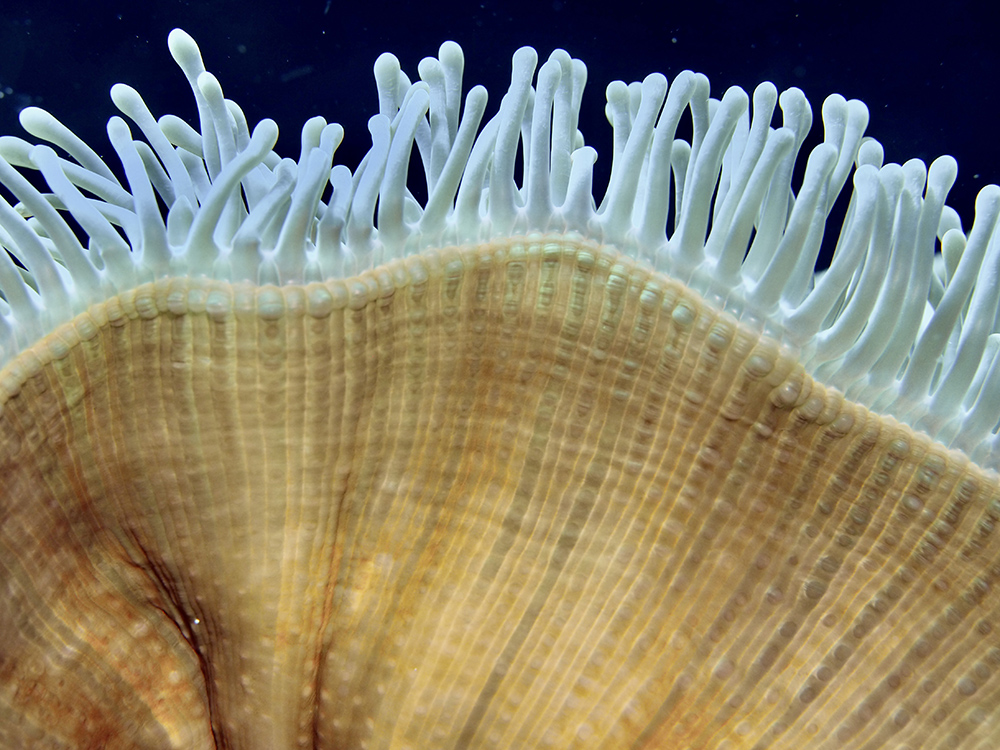
Photo by Hal: Not a fish
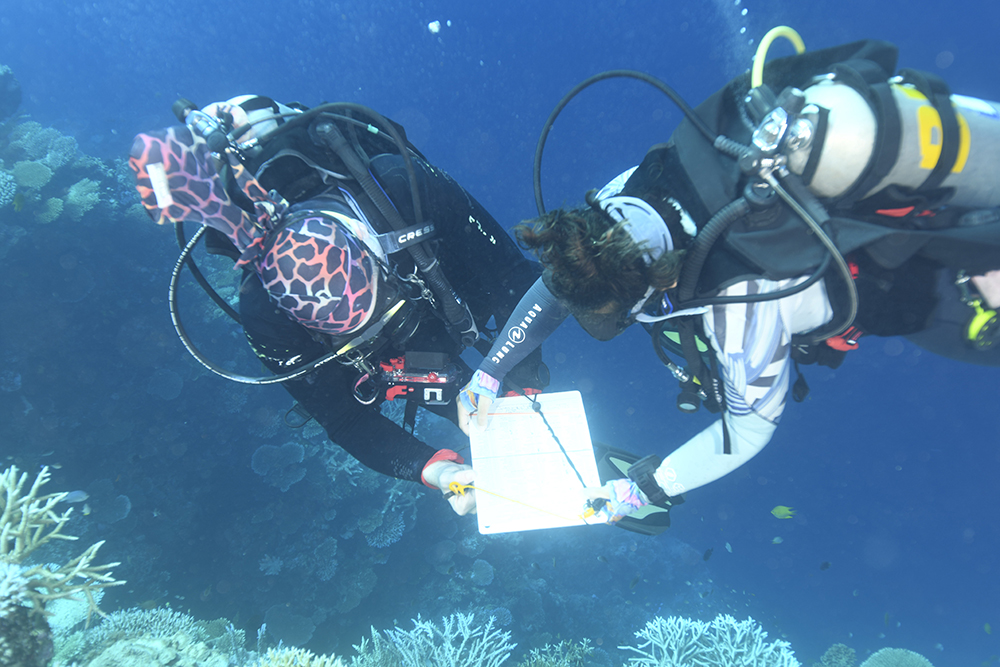
Photo by Matt: Bel and Bill identify a coral goby
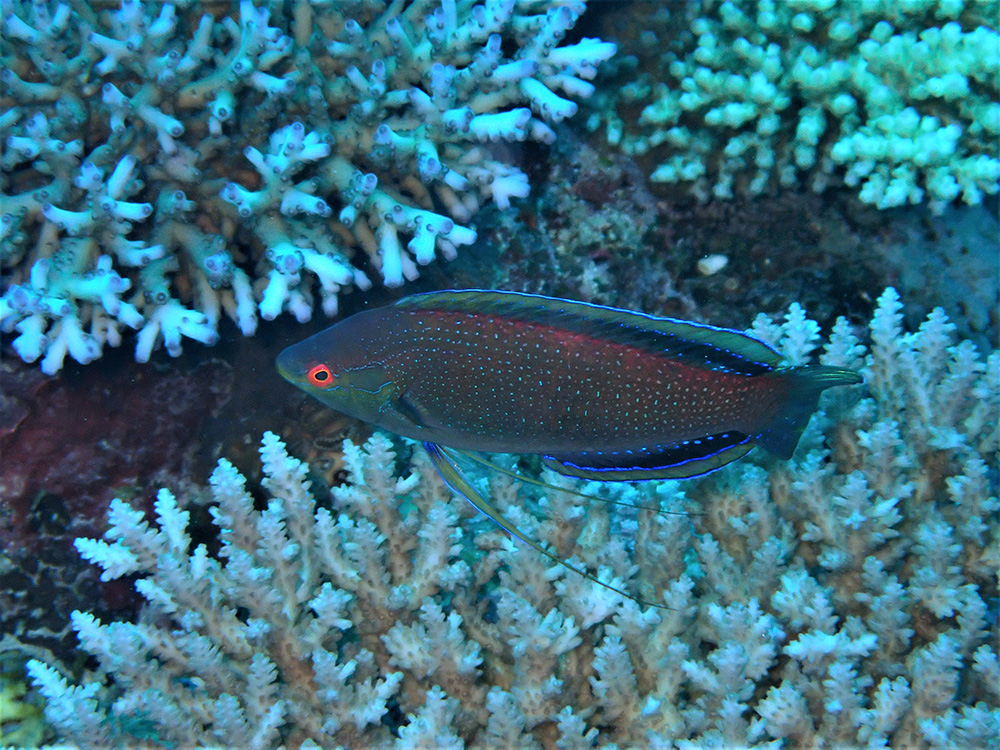
Photo by Michaela: Dotted fairy wrasse
We tested some new surveyors for levels 2 and 3 on the way back to Lautoka and celebrated a successful trip. We will soon know just how many species this lot identified during their dives with us and check if they reached the 650 (more or less) identified on their last trip to Fiji.
PS.: Thank you for all the photo contributions. Especially Hal, who may be kicked out of the group after so many non-fish photos.
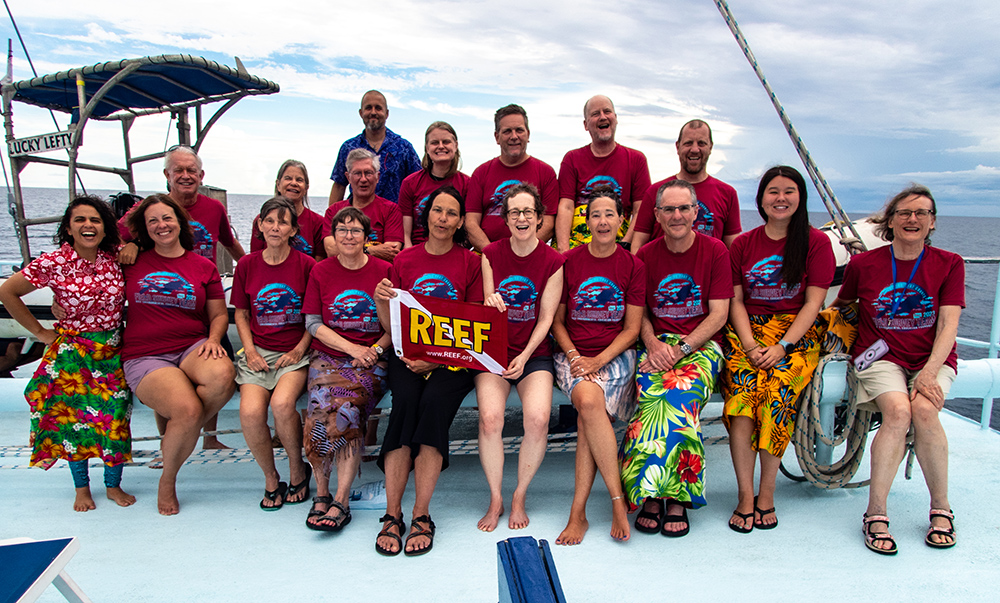
Comments
“Fiji is a hot spot of biodiversity. We’re here for the rich colorful soft coral reefs as well as the unusual stuff - the strange little creatures and endemic fishes.”

~ Dr. Tim Laman, biologist and National Geographic Photojournalist

